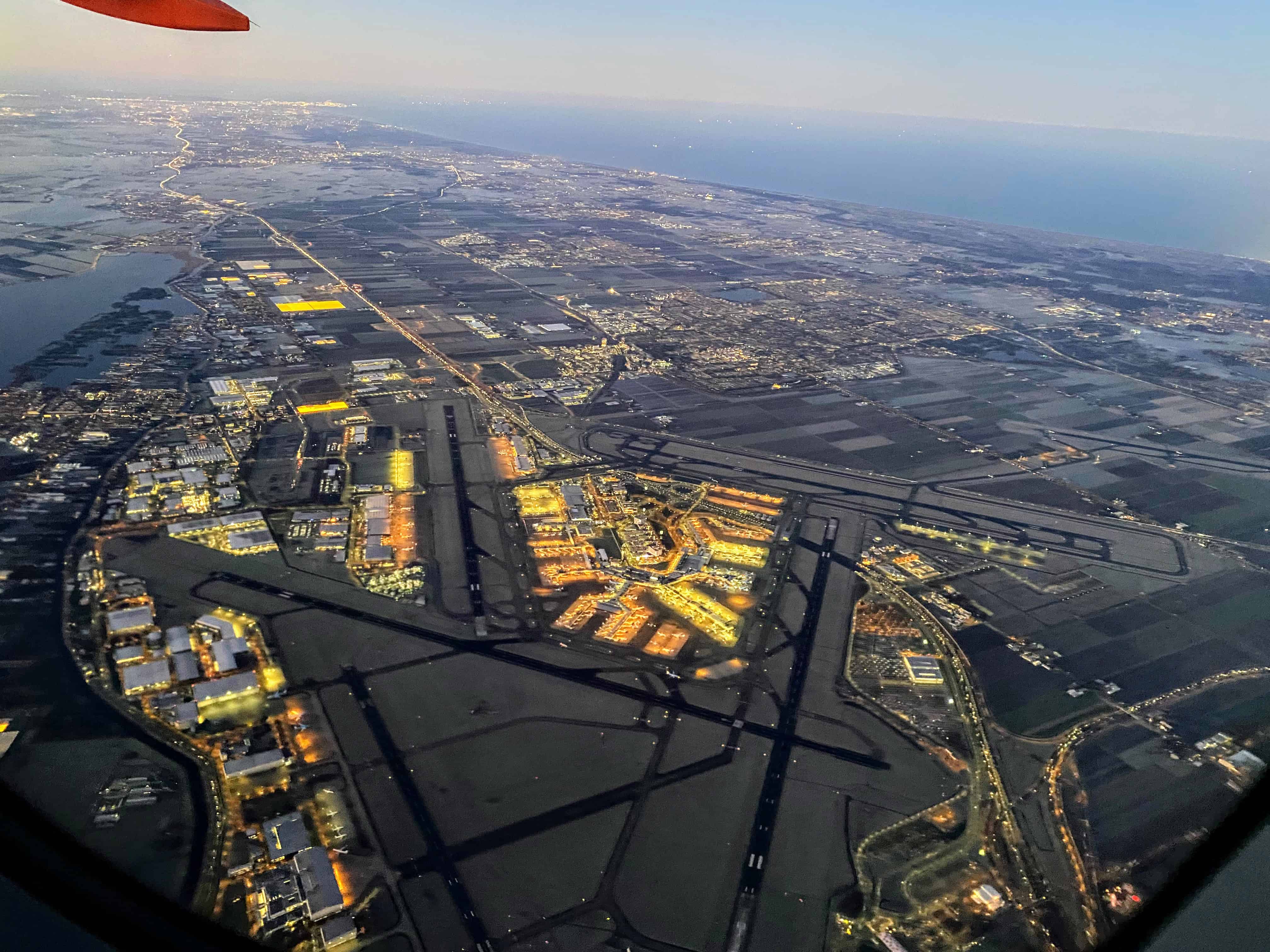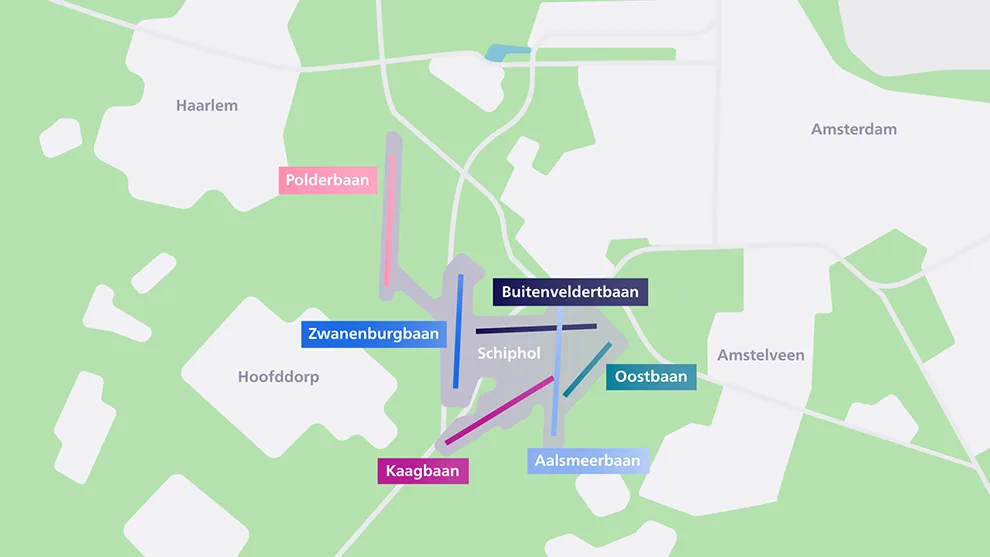
Schiphol Airport, with its 6887 acres and five runways, is larger than both JFK New York and Heathrow London. A huge take on space in the busy and expensive Randstad region. With limits being placed on the number of flight movements, we must also ask ourselves whether the size of land use still fits in the Randstad. Reducing Schiphol to two runways would create a compact and efficient airport and make room for a new city between Amsterdam, Aalsmeer, and Hoofddorp.
The possibility of a second terminal
Although a concrete plan was never developed for constructing a second terminal between runways Polderbaan and Zwanenburgbaan, it was considered during the construction of the Polderbaan. The idea of a second terminal at this location could be considered again but as a replacement for the current Schiphol instead of an expansion. Reducing Schiphol to two runways will make the airport more compact and efficient, freeing up a lot of space for housing development.

The Polderbaan is known for its remote location, 4.5 km away from the terminal area. The runway was opened in 2003 and was intended to minimize overflights of built-up areas during takeoff and landing. However, the real objective of this remote location was to keep land free for future development. The remoteness brings its own environmental and nuisance problems because aircraft must taxi to the terminal on jet engine power for 10 to 15 minutes.
Considerations for a smaller Schiphol
Reducing Schiphol to two runways now would probably mean a ceiling for passengers and cargo. However, there is also no ambition for Schiphol to grow any further. Much of Schiphol’s traffic consists of transfer passengers, on which little profit is made. The question is whether attracting this kind of business to an expensive location like Schiphol is desirable.
Not only is Schiphol in itself a large area, but its influence is also immense. Because of the many runways, the airspace is crowded; with it, the noise contours hinder further housing development in the region.

A smaller Schiphol
If Schiphol shrinks in size, hundreds of thousands of people could live in the vacated space. The current terminal is already a fantastic public transport hub that could become the center of a new city between Amsterdam, Aalsmeer, and Hoofddorp. This city would be well connected to the rest of the Randstad without sacrificing nature. A new Schiphol with two runways is on par with, for example, Heathrow and Hong Kong Airport. Both airports with similar or larger passenger numbers than Schiphol has now. So a smaller Schiphol does not mean that Schiphol will become ‘just’ a regional airport.
The future of Schiphol and housing development
If the Dutch government allows Schiphol to grow further, the airport already has plans in place to make it happen. However, with growing concerns about climate change, the outcome of the discussion about long-term growth remains uncertain. Physically shrinking Schiphol could not only provide new opportunities for the airport itself but also for the housing market in the Randstad region. The question is what the Netherlands needs more of now: aircraft movements or houses?







